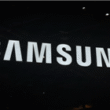Global TV Shipments Dip Below 50 Million Units: A Market Analysis
Key Takeaways:
- Global TV shipments reached approximately 49.75 million units in Q3 2025, marking a decline below 50 million for the first time.
- Major contributing factors include extended consumer purchasing cycles and a reduction in the impact of Chinese market subsidies.
- Hisense has reclaimed its position as the second-largest TV manufacturer, with significant growth in shipments.
The latest study from consulting agency TrendForce reveals a concerning trend in the global television market. For the third quarter of 2025, worldwide TV shipments amounted to around 49.75 million units. This figure represents a noteworthy quarterly increase of 6% but an annual decline of 4.9%, underlining a critical moment in the industry as shipments fall below the 50 million mark for the first time in recent history.
Reasons for the Decline
Several interrelated factors have contributed to this decline in shipments:
-
Extended Consumer Purchasing Cycles: Many consumers are delaying their television purchases, opting to hold onto their current devices for longer periods.
-
Advance Demand Effects: Changes in the international landscape have created fluctuations in demand, causing consumers to pull forward purchases in anticipation of future market shifts.
- Fading Subsidy Benefits: As China’s market subsidy policies gradually diminish, their previous influence in bolstering sales is also fading, contributing to an overall contraction in market size.
Leading Brands in the Market
Despite the overall downturn, certain brands continue to outperform. In the third quarter of 2025, the leading manufacturers by shipment volume included:
- Samsung
- Hisense
- TCL
- LG Electronics (LGE)
- Xiaomi
These five brands collectively captured 64.3% of the total market share, underlining their dominance in a challenging environment.
Hisense’s Market Strategy
Hisense has demonstrated remarkable adaptability by shifting from a defensive to an offensive market strategy in the latter half of 2025. By aggressively pricing both domestic and international sales, Hisense successfully increased its third-quarter shipments to 7.66 million units, representing a substantial quarterly growth of 9.7%. This surge allowed the brand to regain its position as the second-largest TV manufacturer globally, with its market share rising to 15.4%, marking a record high for this timeframe.
Market Trends and Future Directions
TrendForce points out that the market is experiencing a significant slowdown in the growth of larger-sized TVs. Specifically, shipments of 65-inch models are projected to stagnate in 2025, while growth in the 75-inch segment is expected to be a mere 13%, significantly lower than previous years. Super-sized TVs, including 85/86-inch, 98-inch, and 100-inch models, are also showing minimal growth prospects.
This trend indicates a strategic shift within the industry. Manufacturers are moving their focus from "size enlargement" to "product upgrade," aiming to differentiate their offerings through advanced specifications. Future market competition will likely center around high-end features such as RGB Mini LED technology, enhanced refresh rates, and AI-integrated audio and video capabilities, all aimed at improving product value.
Conclusion
As the television market experiences fluctuations and challenges, industry players must adapt their strategies to thrive in a competitive landscape defined by changing consumer behaviors and economic conditions. With brands like Hisense reallocating their focus toward product innovation rather than merely expanding screen sizes, the future of TV sales will hinge on the ability to meet evolving consumer expectations for quality and performance.
Understanding these dynamics will be essential for stakeholders aiming to navigate the complexities of today’s television market effectively.








